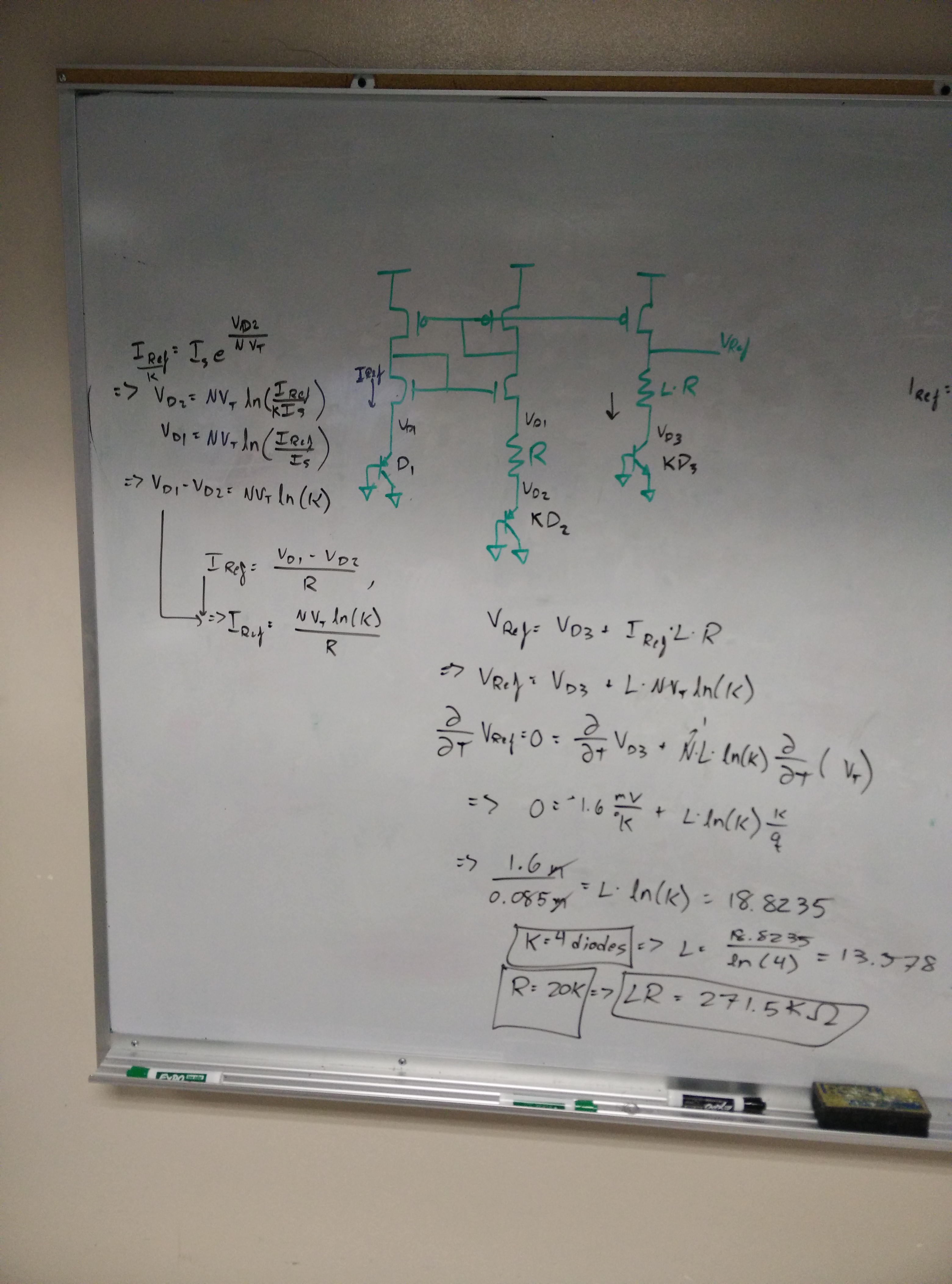
| VDD (V) | Vbiasp (V) | Vref (V) |
| 0.998 | 0.03 | -0.0226 |
| 1.998 | 0.556 | 0.645 |
| 2.997 | 1.538 | 0.859 |
| 3.996 | 2.526 | 1.058 |
| 4.996 | 3.516 | 1.261 |
| 5.996 | 4.508 | 1.475 |
| 6.995 | 5.5 | 1.701 |
| 7.994 | 6.493 | 1.943 |
| 8.993 | 7.486 | 2.203 |
| 9.993 | 8.48 | 2.479 |
* Long channel models
* Level=1 models VDD=5V
*
.MODEL N_level1 NMOS LEVEL = 1
+ TOX = 1.13E-9
+ VTO = 0.8
+ GAMMA = 1
+ KP = 5.38E-6
+ LAMBDA = 0.05
*
.MODEL P_level1 PMOS LEVEL = 1
+ TOX = 1.13E-9
+ VTO = -1
+ GAMMA = 1
+ KP = 4.8E-6
+ LAMBDA = 0.05
*